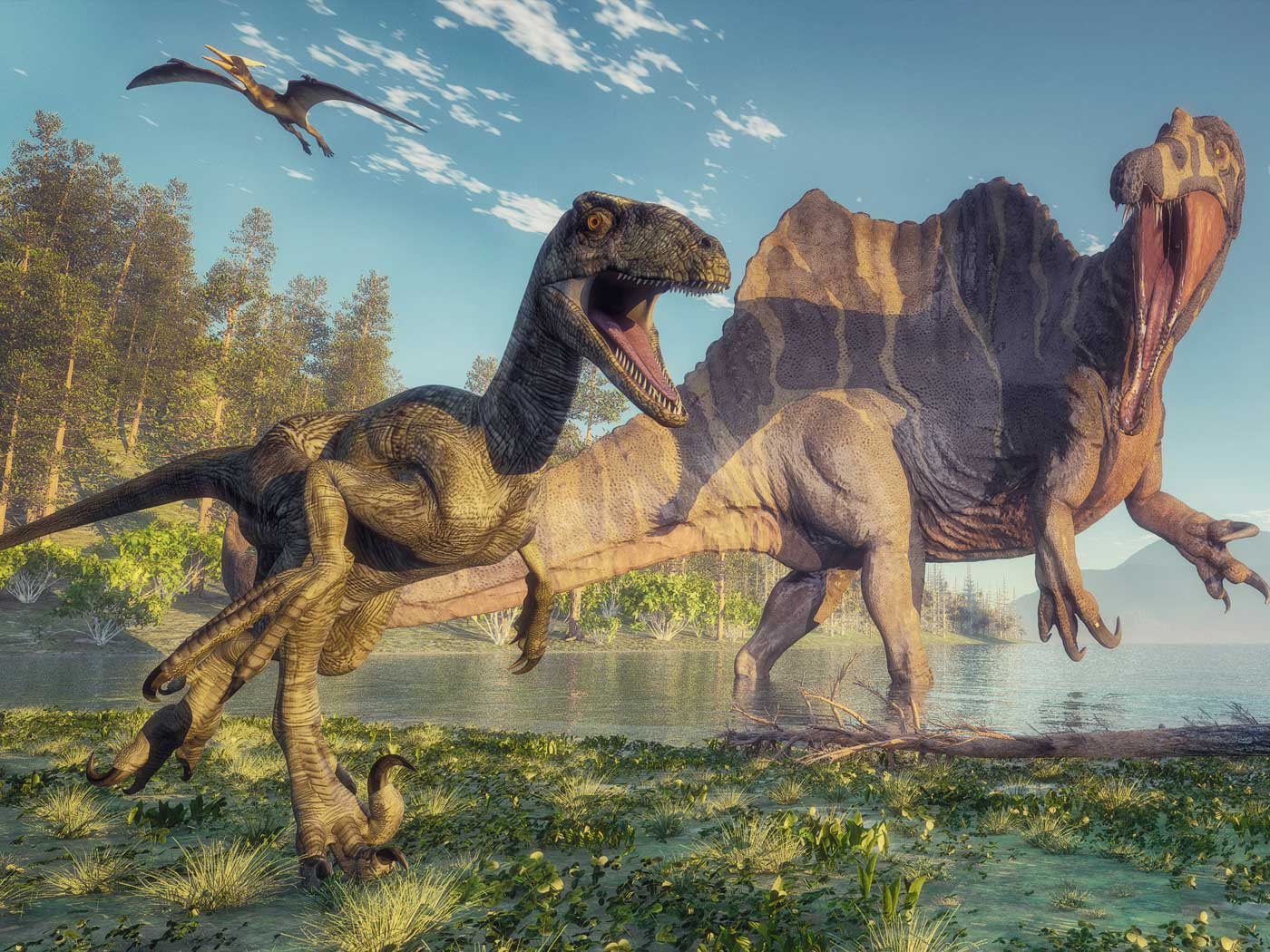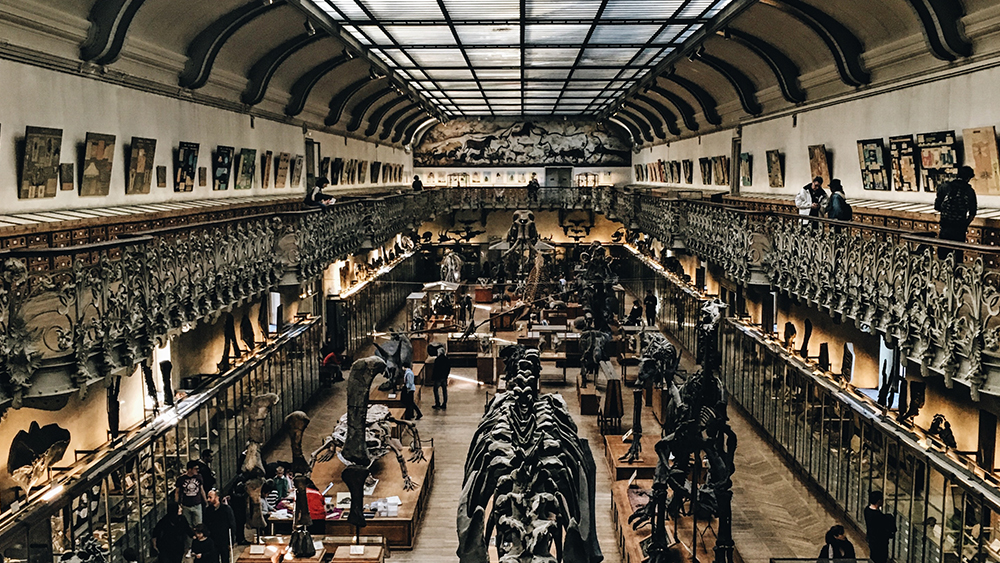A button reading “Dinosaurs are not birds” was handed out to interested attendees of the Florida Symposium on Dinosaur Bird Evolution in Fort Lauderdale, Florida, April 7–8, 2000. This statement flew in the face (so to speak) of a majority of evolutionists at the symposium who believed that heavy-tailed theropod dinosaurs somehow sprouted feathers and evolved into today’s heavy-chested birds.
Who were the vocal minority? Well, I was there, along with several members of the intelligent design community, and evolutionists including paleobiologist Alan Feduccia, Larry Martin (now deceased), and zoologist John Ruben.
Despite evidence to the contrary, most evolutionists today still generally agree that dinosaurs had feathers. For example, Kenneth Kardong showed in his college textbook a “hypothetical scale, intermediate stage between an enlarged reptile scale and an early bird feather.”1 In the complete absence of genuine dinosaur feather examples, evolutionists supply hypothetical ones.
Before even considering the dinosaur-to-bird story as a possibility, we should first examine the anatomical precision of feathers. They grow out of skin follicles, much like mammal hairs. They are completely different from reptilian scales in their organization, development, function, and mode of replacement. Indeed, they are unique systems involving stem cells and specialized regulatory proteins. Built-in timers know when to shed a worn feather and grow a fresh replacement. Such complexity defies ideas of gradual change since all these parts have to be in place and working together at the same time to make even one feather. In contrast, scales are simply thickened folds of skin.
God engineered exquisite flight feathers for lightweight aerodynamic efficiency. Using a microscope, one can see an amazing display of interlocking hooks and barbules—features absent from all dinosaur fossils so far described. When the bird preens with its bill, the zippering effect flattens feathers and snaps them into shape again. In order to preen, the feather-possessing creature must have a bill. Some dinosaurs had beaks, but none had bills. Furthermore, true bird fossils appeared before dinosaurs in the fossil record—a fact that those who promote the strange dinosaur-to-bird theory gloss right over!
If feathers didn’t evolve from lizard scales, then what are these “feathered dinosaurs” we’ve seen in evolutionary museum dioramas? Dinosaur fossils sometimes show fibrous filaments, but these are hardly feathers. Dissenting evolutionists (those who do not believe dinosaurs evolved into birds) at the Florida symposium showed how those filaments looked just like decaying skin fibers from partly rotten carcasses.2 But one thing is certain: They are not real feathers.
Illustrations and museum models of feathered dinosaurs are not based on fossils but only on evolution-inspired imagination. For example, caenagnathids are a family of theropod dinosaurs and part of a group of dinosaurs most evolutionists think are most similar to birds. Their North American fossils show no feathers. But Wikipedia’s caenagnathidae entry supposes they “would have been covered in feathers.”3 This is speculation, not science. Senior writer Stephanie Pappas said in LiveScience that a caenagnathid dinosaur called Anzu wylieli “probably wore feathers.”4 Probably?
In 2011 news reports fluttered over alleged “protofeathers” in amber samples from two Canadian museums reported on in the journal Science.5 The word protofeathers assumes that simple tufts and filaments somehow evolved into true flight feathers. LiveScience cautioned, however, that “the fossil record of this evolution from simple to complex feathers is spotty. Researchers actually have older records of more modern feathers than they do of the simple dinosaur protofeathers.”6 Two evolutionists later criticized the 2011 Science paper, saying that proposed protofeather fibers could actually be plant material or mammal hair and not even from dinosaurs.7 Clearly, the “dinofuzz” buzz was pretty bad science.
Did dinosaurs have feathers? Since nobody can interview any dinosaur that lived, we cannot say with scientific certainty that none had feathers. But so far, no dinosaur fossils show actual feathers, and many scientific reasons oppose this feathered tale.
References
- Kardong, K. V. 2012. Vertebrates: Comparative Anatomy, Function, Evolution, 6th ed. New York: McGraw Hill, 226.
- For more information, see Sherwin, F. and B. Thomas. 2012. Did Some Dinosaurs Really Have Feathers? Acts & Facts. 41 (6): 16-17.
- Caenagnathidae. Wikipedia. Posted on en.wikipedia.org, accessed June 2, 2014.
- Pappas, S. Flashy New  ‘Chicken from Hell’ Dino Discovered. LiveScience. Posted on livescience.com March 19, 2014, accessed June 2, 2014.
- McKellar, R. C. et al. 2011. A Diverse Assemblage of Late Cretaceous Dinosaur and Bird Feathers from Canadian Amber. Science. 333 (6049): 1619-1622.
- Welsh, J. Feathers Preserved in Amber Reveal Colorful, ‘Fluffy’ Dinosaurs. LiveScience. Posted on livescience.com September 15, 2011, accessed June 2, 2014.
- Dove, C. J. and L. C. Straker. 2012. Comment on “A Diverse Assemblage of Late Cretaceous Dinosaur and Bird Feathers from Canadian Amber.” Science. 335 (6070): 796.
* Mr. Sherwin is Research Associate, Senior Lecturer, and Science Writer at the Institute for Creation Research.

























